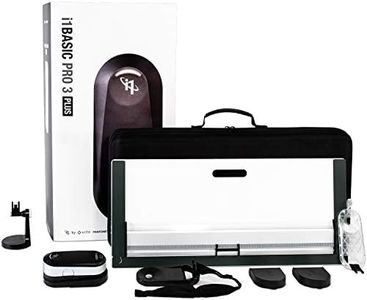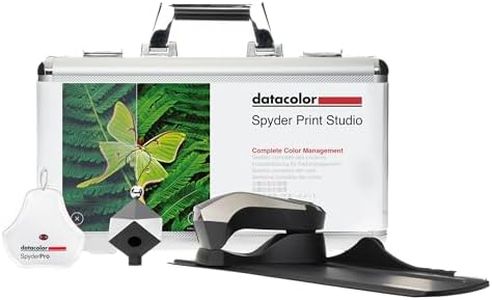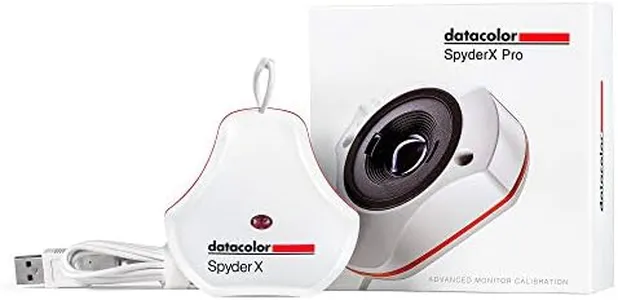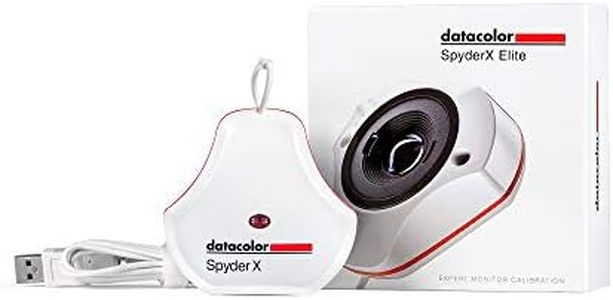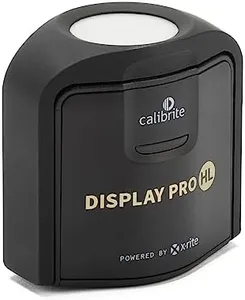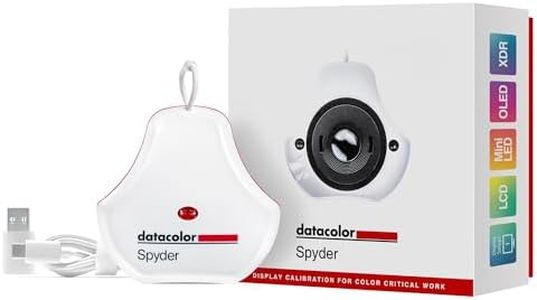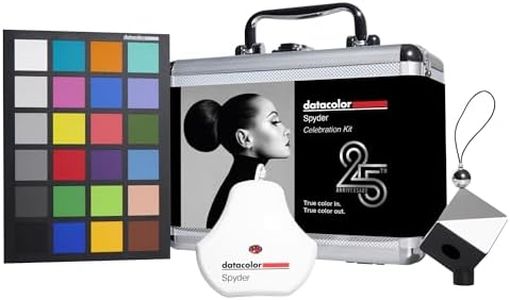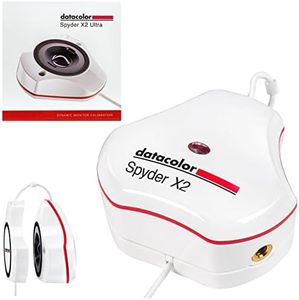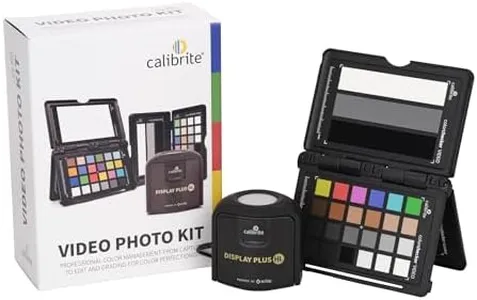We Use CookiesWe use cookies to enhance the security, performance,
functionality and for analytical and promotional activities. By continuing to browse this site you
are agreeing to our privacy policy
10 Best Monitor Calibrators
From leading brands and best sellers available on the web.Recommended lists
Buying Guide for the Best Monitor Calibrators
Choosing the right monitor calibrator is essential if you want your screen colors to be as accurate as possible. This is especially important for photographers, designers, videographers, or anyone who cares about color precision when working with images, graphics, or video. The goal of a monitor calibrator is to help ensure the colors you see on your screen match the real world or printed results as closely as possible. When picking a calibrator, you need to understand which features matter for your specific use, as not every calibrator is a perfect fit for every type of display or workflow. It's important to know what kind of monitor you have, what level of accuracy you need, and how much automation or manual control you prefer.Type of SensorMonitor calibrators typically use either colorimeters or spectrophotometers as their sensor. Colorimeters are excellent for most displays, especially backlit LED screens, and are usually faster and more affordable. Spectrophotometers, on the other hand, measure a broader range of wavelengths, making them better for special tasks like calibrating wide-gamut or high-end professional monitors, and for handling both screens and print profiles. If you mostly work with regular monitors, a colorimeter is usually enough. If you plan to calibrate special displays or also want to profile printers, consider a spectrophotometer.
Supported Display TypesNot all calibrators work well with every kind of display. Some are fine-tuned for standard sRGB monitors, while others can accurately calibrate a wide range of display technologies, including wide-gamut, high-brightness, OLED, or hardware-calibrated monitors. It's important to check whether the calibrator can handle your screen type. If you use a basic monitor, most calibrators will do. If you use ultra-high-end, 4K, or specialized displays, look for a calibrator that supports these specific screens to get the most accurate results.
Calibration Software FeaturesEvery calibrator comes with its own software, which affects how easy and precise your calibration process will be. Some software is very automated, good for beginners or quick setups, while others offer advanced controls for color temperature, gamma, white point, and custom targets. Think about whether you want a simple process or prefer to fine-tune the calibration to match certain standards, like Adobe RGB or DCI-P3. If you need advanced customization for color-critical work, choose a calibrator with robust software options.
Recalibration Reminders and SchedulingMonitors change over time, so having the ability to set reminders or schedule automatic recalibrations is useful. This feature is important if you regularly do color-sensitive work and need ongoing accuracy. Some calibrators let you set up reminders or even calibrate automatically at set intervals, making it easier to keep your screen consistent. Choose this feature if you don’t want to worry about tracking calibration dates yourself.
Ambient Light MeasurementSome calibrators can measure the light in your room and adjust the calibration based on your environment. This is important because room lighting can affect how colors appear on your screen. If you work in changing lighting conditions or want the most accurate results for your setup, select a model that offers ambient light measurement and adjustment features.
Speed and Ease of UseCalibration can sometimes be a time-consuming process, so the speed of the device and the simplicity of its software matter, especially if you want to recalibrate regularly. Some models complete the process much faster or offer a more straightforward experience than others. If you value convenience and efficiency, look for a calibrator known for fast and user-friendly operation.
